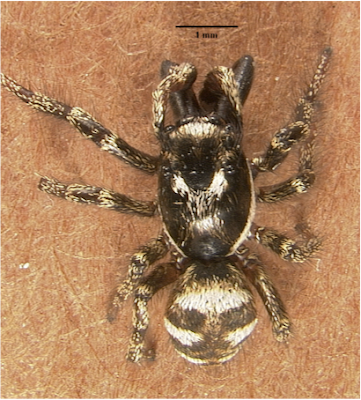I am very pleased to announce that one of my collaborators and I have just recieved funding to make a small book on local jumping spiders! The book (which will be published in pdf form on this blog for free) will feature full color close ups (macro photography), a dichotomous key to species and a few hands-on activities aimed at teaching kids about jumping spiders. While we have only just started work on the project, we are hoping to have the bulk of the photos taken by the end of the summer and will definitely be posting some of our favorites as we progress.
If there is anything that you, my dear readers, would like to see in the book, please tell us in the comments! We will make every effort to address all of your reasonable requests. In the mean time, stay tuned for more Salticid-tastic updates and sneak previews of the book.


